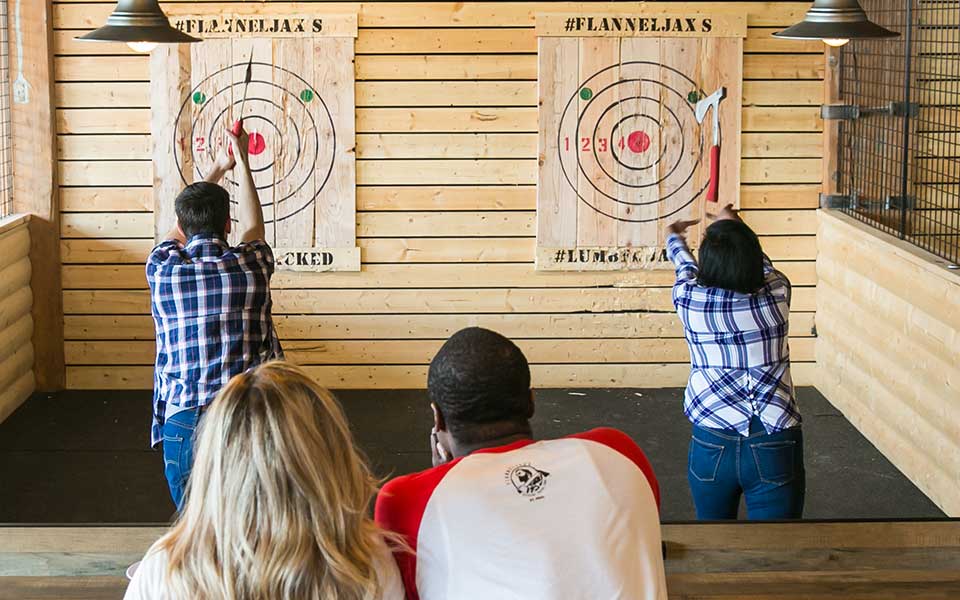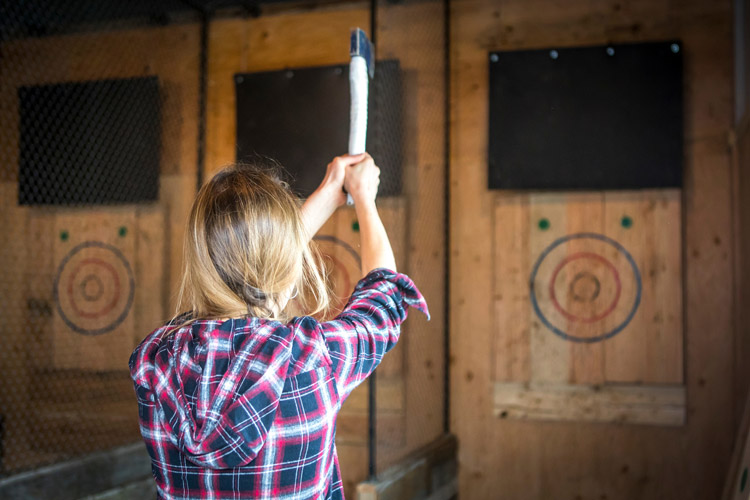The Fun of Axe Throwing: How This Sport Incorporates Ability and Adrenaline for a Blast
Axe throwing has actually arised as an astounding sporting activity that masterfully intertwines the need for precise ability with the rush of adrenaline, offering participants a appealing and distinct experience. The act of hurling an axe in the direction of a target requires concentration and method, simultaneously promoting an ambience of friendship and pleasant rivalry.
The Beginnings of Axe Throwing
Axe throwing, a recreational task that has obtained significant appeal in the last few years, traces its roots back to ancient times. This primitive sporting activity dates back to early human background, when axes were primarily made use of as weapons and devices. The earliest records of axe usage in competitive contexts are discovered amongst the Celts and Vikings, who threw axes for sport along with in combat training. The method was not merely an activity yet a critical ability for survival and war.
Medieval European warriors, especially during the Middle Ages, practiced axe throwing as component of their martial training. The Francisca, a type of tossing axe utilized by the Franks, ended up being iconic for its deadly precision. This conventional tool was made to be tossed at enemy guards and armor, showcasing its double energy in both sporting activity and fight.
In even more recent history, axe throwing saw a resurgence in the logging camps of North America in the 20th and 19th centuries. Lumberjacks would certainly take part in pleasant competitors, testing their precision and strength by focusing on wooden targets. This development from a survival skill to a recreational task has paved the means for its contemporary revival, with committed venues and leagues now commemorating the sport worldwide.
Tools You Required
Recognizing the rich history of axe tossing improves the gratitude of the sporting activity's contemporary model. Central to this thrilling activity is the equipment, which is necessary for both security and efficiency. The main device is, obviously, the axe. For leisure and affordable axe throwing, one of the most generally made use of kind is the hatchet, typically evaluating in between 1.25 to 2 extra pounds with a handle length of around 16 inches. The axe should have a sharp, well-kept blade and a manage made from long lasting timber or composite product, making certain a good hold and equilibrium.
Equally essential is the target. Law targets are created from wood, with softwood selections like yearn or cottonwood being preferred for their capacity to hold the axe and soak up. The target is generally split into five concentric circles, each with a specific factor value, to promote rating.
Safety gear, though commonly ignored, is important. Safety gloves can boost grip and stop blisters, while closed-toed shoes are a must to secure feet from dropped axes (axe throwing denver). Finally, a well-lit, sizable throwing location, complete with safety and security barriers, guarantees a regulated environment where participants can focus on sharpening their skills.
Standard Techniques Discussed
Mastering the fundamental strategies of axe throwing is important for both safety and security and efficiency. The leading hand must be placed straight listed below the axe head, while the non-dominant hand sustains the end of the deal with.
Your dominant foot ought to be a little onward, official source straightening with your target. This positioning aids in keeping security and directing power properly in the direction of the target.

Safety First
Guaranteeing security in axe throwing is paramount to developing an injury-free and enjoyable experience. Security determines begin with the place format. A properly designed axe tossing facility attributes clear demarcations in between throwing lanes, tough backgrounds to catch stray axes, and non-slip flooring to protect against mishaps. In addition, ample illumination is vital to assist participants maintain aesthetic precision and spatial recognition.
Advantages of Axe Throwing
Axe tossing deals a myriad of advantages that prolong past simple recreation. The repetitive activity of throwing the axe also boosts hand-eye coordination and great motor skills.
Mentally, axe throwing calls for accuracy, emphasis, and strategy, making it an excellent way to sharpen cognitive skills. The focus required to hit the target can serve as a kind of mindfulness, enabling participants to clear their minds and minimize tension. This mental interaction can be specifically helpful in assisting individuals develop much better problem-solving abilities and mental strength.
Socially, axe throwing is frequently appreciated in group settings, cultivating team-building and camaraderie. Whether as component of a business occasion or an informal trip with buddies, the sporting activity urges communication and cooperation. Furthermore, the public experience of learning and boosting together can reinforce partnerships and produce lasting memories.
Verdict

The earliest documents of axe use in competitive contexts are found among the Celts and Vikings, that threw axes for sporting activity as well as in fight training. Release the axe when your hands are roughly at eye level, allowing the axe's natural rotation to direct it in the direction of the target.
A well-designed axe tossing center attributes clear demarcations in between tossing lanes, tough backdrops to capture roaming axes, and non-slip floor covering to prevent mishaps. Individuals have to be advised on the proper way to toss the axe and take care of, stressing regulated, intentional motions site here over forceful throws.
In recap, axe tossing stands out as a sporting activity that masterfully incorporates precision, skill, and adrenaline.